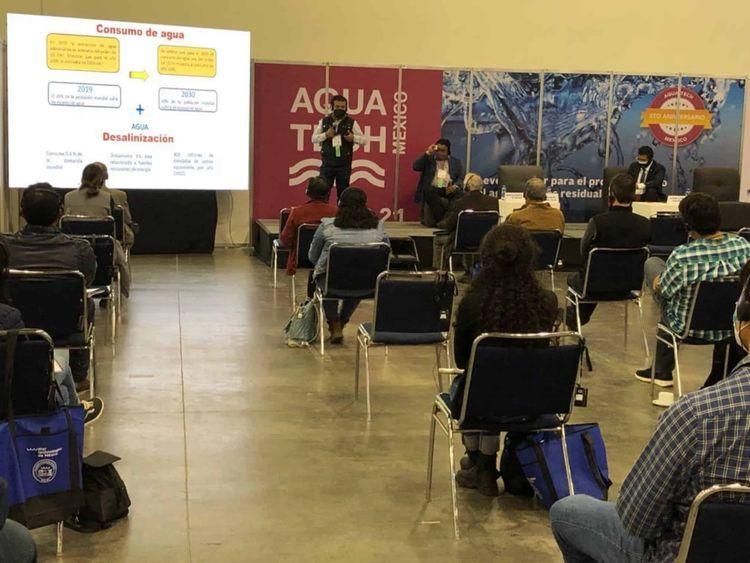It had not yet been 24 hours since the beginning of the year when the National Water Commission (Conagua) announced that the integration of the Mexican Institute of Water Technology (IMTA) into its functions was under way. But more than an incorporation, it should be called a disappearance, said the institute's workers' union (SITIMTA), made up of researchers from different areas, who are waiting for a response to requests for a hearing to stop the change.
Rafael Espinosa, general secretary of SITIMTA, indicated in an interview with Causa Natura that a dialogue is being sought with President Andrés Manuel López Obrador, with the Secretariat of Environment and Natural Resources (Semarnat), as well as with deputies, senators and their respective commissions. If this does not work, they will resort to foot demonstrations.
“The incorporation represents a setback for research, technological development and the training of qualified human resources for the water sector. [...] Extinguishing the IMTA threatens the country's national security because it is water, a strategic resource,” said Espinosa.
The news was officially published on December 17. In a statement, Semarnat announced its administrative reform, which would consist of the incorporation of the National Institute of Ecology and Climate Change (INECC) to that unit, as well as the IMTA to Conagua.
Both Conagua and Semarnat say that there will be respect for the labor rights of the staff of both institutes, but Espinosa describes the change as hermetic. He even thinks that since they are personnel who are close to old age, several will be retired, which would cause the loss of lines of research of up to 30 years.
“It's heartbreaking for us to be out of work, but it's more so for the country. The IMTA is the continuation of the National Hydraulic Plan and we have the scientific and documentary collection. If Conagua absorbs us, they are not going to give it the value that this information actually has,” added the secretary.
However, for what the specialist guild represents a step backwards in scientific progress, for the federal administration it is an austerity measure . According to Semarnat, this is an administrative reform to “use public resources for clear objectives, avoid duplication of functions and close spaces to corruption”.
“When it comes to duplicating functions, that's not the case. We (the IMTA) do the research of technological development and the training of resources. We don't execute, the executing component is Conagua,” Espinosa explained.
The years of the IMTA
Over the past few weeks, organizations and coalitions, such as the Gender and Environment Network or the ProCienciaMX Network, have issued pronouncements against the federal administration 's decision.
Juan Martínez, a researcher at the Institute of Ecology (Inecol) and member of the second network, affirms that environmental research institutions have weakened since previous years.
“There is a precarious operating situation and what we see here is that not only is there a small budget, they are also disappearing. All the environmental institutions we know can be critical, but I think that no colleague, no academic, none of the people who work in the sector, would have imagined or wanted the INECC or the IMTA to disappear,” he said.
For researcher Martínez, the next step was to strengthen the independence and autonomy of research centers.
If the process continues, this would not be the first time that the IMTA has joined Conagua. In fact, when it emerged in 1986, it did so within the commission as a technological part. It was until its decentralization years later that it began to serve non-governmental organizations and private industry.
Rafael Espinosa constantly states the loss of information as one of the biggest effects. In addition, he shares that the union has talked about the entry of young personnel, who are trained, so that colleagues transfer their knowledge and give continuity to the lines of research. But the proposal was always left in the void.
“Leaving the investigation leaves the country at the mercy of others who are making strong progress in this sector. For example, Israel, China and the United States that allocate up to 7% of Gross Domestic Product (GDP) to science, research and technological development. Here in Mexico, we haven't even reached 0.5%,” he explained.

The
IMTA has operated as a research and development institution since its founding in 1986.
Photo: Mexican Institute of Water Technology.
INECC in limbo
While the IMTA Workers' Union awaits a response to its requests for audits, the mobilizations for the INECC are keeping quiet.
At the close of this publication, Semarnat did not yet report further details about the incorporation of the institute. But researchers, such as Juan Martínez, mention the importance of involving citizens, in a context where research centers are being threatened.
“This occurs during a new year due to the energy reform, which necessarily leads to the use of materials that contribute significantly to the increase of greenhouse gases on our planet. In this case, the INECC represents a great loss.”
As a researcher at Inecol, Martínez reflects on the need to strengthen other institutions that have also been questioned, such as the National Commission for Protected Natural Areas (Conanp).



Comentarios (0)